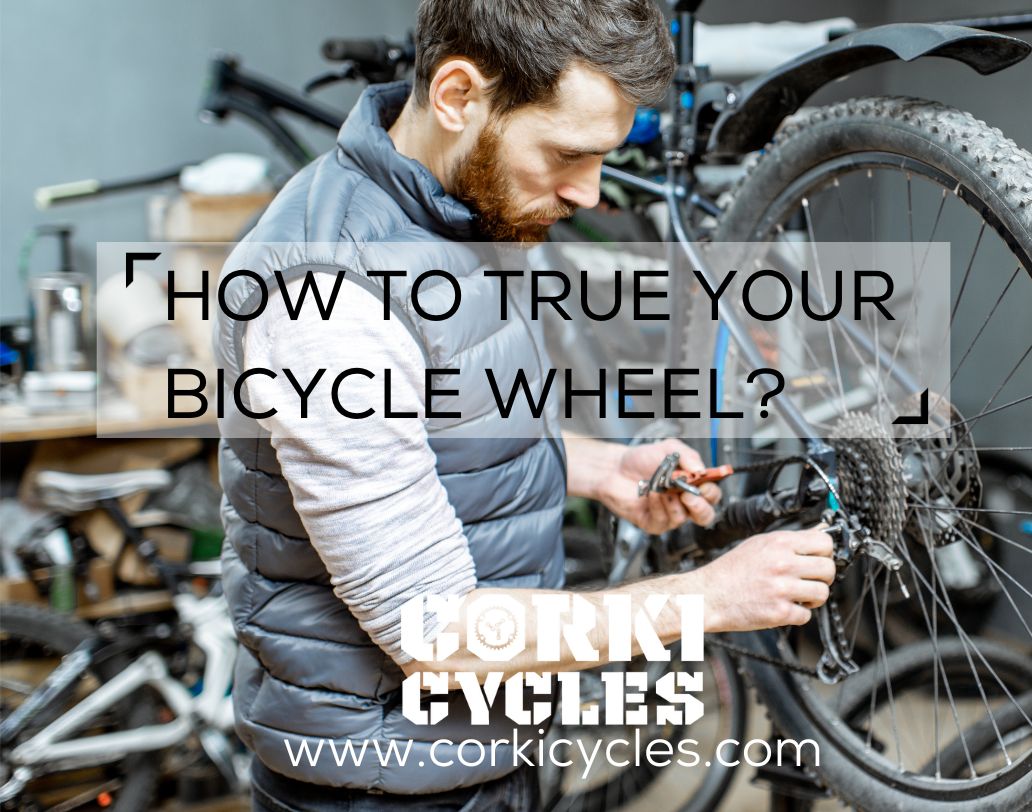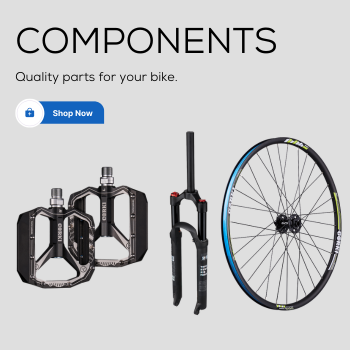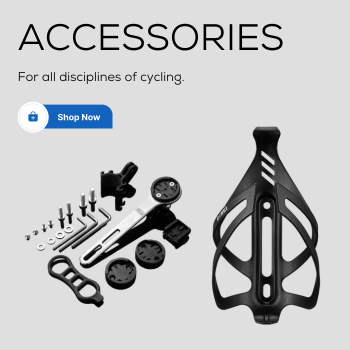
How to True Your Bicycle Wheel?
If you're an avid cyclist, you know how important it is to have a well-functioning bicycle. One of the most common issues cyclists might face is anmis-aligned wheel, which can cause wobbling, uneven braking, and even accidents. So, keeping your bicycle wheel in good tune is crucial before venturing on any ride.
In this blog, I'll guide you through the steps to true your bicycle wheel with the following points included:
- The Basic Concepts of Truing
- Tools You Need to True a Bicycle Wheel
- Steps to True Your Bicycle Wheel
- How to True a Bike Wheel Without a Truing Stand
- Conclusion
The Basic Concepts of Truing?
A bicycle wheel consists of a circular structure, known as the rim that is connected to a hub by spokes. These spokes extend from both sides of the wheel and apply tension to the rim. To enhance the wheel's alignment and shape, the process of wheel truing involves adjusting the spoke tension with a spoke wrench.
What is Lateral Truing?
Now before we go too much into truing, I need to say there are 2 types or truing. These are lateral and radial truing. We'll start first with lateral truing.
Lateral truing is the process of adjusting the spoke tension on a bicycle wheel to correct any side-to-side or horizontal wobbling or "out of alignment" condition.

What is Radial Truing?
Radial truing refers to adjusting spoke tension to correct issues with the wheel’s vertical hops.

What is Dish Centering?
Dish centering means both wheels are centered in the frame when installed.
What is Spoken Tension?
Spoken tension relates to the tension or tightness between the hub, spoke, and rim. The spoke is attached to the rim by the spoke nipple, which is threaded onto the end of the spoke. You can tighten them according to your needs andriding style. Adjust them until you achieve the desired tension, taking care not to make them too tight or too loose.

Tools You Need to True a Bicycle Wheel.
- Truing stand or other devices that hold the wheel stationary while making it easier to track the deviations.
- A spoke wrench is used to loosen or tighten the spoke to align the wheel. Be sure to select a wrench that is compatible with your wheels, as both nipples and wrenches are available in different sizes.
Steps to True Your Bicycle Wheel
1. Mount the Wheel to the Truing Stand
First, we need to remove the wheel from the bike, which makes it easier to inspect and identify the wheel deviations. 
2. Identify the Deviation
In general, there are typically two main types of trueness: lateral truing and radial truing. Spin the wheel and look at the rim. Look for side-to-side wobbles or horizontal hops to spot deviations.
3. Lateral Truing
To begin, spin the wheel and bring it close to the indicator. Observe where the indicator is closest to the rim, then slowly move it until it makes minimal contact with it.
Stop where the rim and indicator touch, and reduce the speed of the rim if necessary. This area of contact is referred to as the deviation that requires correction. The next step will involve correcting the deviation, starting with turning the nipple of the nearest spoke towards the deviation. It is crucial to be careful since the result of trueness will vary as the nipples are sensitive. Starting with a 90-degree angle turn is perfect, and then moving on from there with incremental 90 degree turns.
For lateral deviation, 180 degrees is the most effective, while 45 degrees would serve for minor deviations. Feel free to test and find what works best for you and your wheel! After setting and adjusting always spin the wheel to see how the change affected the deviation. Slow and steady wins the race for wheel truing!
To verify the adjustments made, move the wheel back and spin it while locating any deviations using the indicator. If a deviation is still detected, repeat the entire process.
After you have made adequate adjustments on one side of the rim, you can carry on to the other side. Continue until all deviations have been corrected, even if it is only on one side, to ensure the best riding experience.

4. Radial Truing
In general, lateral truing is a more common and simpler process compared to radial truing. However, if a radial deviation needs to be corrected, it can be challenging, especially for a novice.
1. Spin the wheel and observe the rim as it passes through the brake pads. Look for any deviations from a straight line or wobbling.
2. Identify the high spot on the rim by using a spoke wrench to touch the rim as it rotates lightly. The spoke that is closest to the high place is the one that needs to be tightened.
3. Use the spoke wrench to turn the nipple on the spoke that needs to be tightened. Turning the nipple clockwise will tighten the spoke and move the rim in the opposite direction.
4. Spin the wheel again and check the trueness. Repeat steps 2 and 3 as necessary until the rim is running true.
5. Once the rim is true, check the spoke tension using a tension meter or by plucking the spokes like guitar strings. Adjust the spoke tension as necessary to ensure that it is even across the entire wheel.
6. Finally, recheck the trueness and spoke tension, and make any final adjustments as necessary.
Wheel truing requires a bit of skill and practice, so it's a good idea to seek the assistance of a professional mechanic if you're not confident in your abilities.
How to True a Bike Wheel Without a Truing Stand?
Although it is easier to use a truing stand, not all people like professional mechanisc have this tool.
Firstly, you just need to prepare a two zip ties and the spoke tool for different size sof nipples, then we can start.
1. Turn your bicycle upside down and keep balance on its handlebars and seat.
2. Make sure the wheel is well-seated in the frame or fork of the bike. That could be the reason why the tire is wobbling. Use a quick-release skewer or axle nuts to hold your wheels in place.
3. Re-spin your wheel slowly. If there is no wobbling, congratulations; your wheels are OK. If it is still wobbling, move to step 4.
4. Use the zip ties as a reference to test which parts of the wheel are out of alignment. Spin the wheel slowly and observe where the zip ties become closer to or rubs the rim.
5. Use a spoke tool to adjust the areas of the rim that are out of line. Tightening the spokes will pull the rim in that direction, while loosening them will allow the rim to move in the opposite direction.
6. Make slight adjustments to the spoke tension and spin the wheel again to check the trueness. Repeat this process until the wheel is within acceptable limits of alignment.
It's worth noting that truing a wheel without a stand can be more challenging and time-consuming than using a truing stand, but it's still possible to achieve good results with patience and practice. Again for best outcomes head to your local bike shop if you don't have the tools or experience.

Conclusion
If you look after your bicycle, your bicycle will look after you. Truing your bicycle wheel is an essential maintenance task that ensures a smooth and safe ride. By following the steps outlined above, you'll be able to true your wheel effectively, even if you're a beginner.
Don't forget to regularly inspect your bicycle for any signs of damage and address any issues promptly. With proper care and maintenance, you'll be able to enjoy your cycling adventures without any worries. So, get your tools ready and start truing your bicycle wheel for an improved riding experience. Happy cycling!




